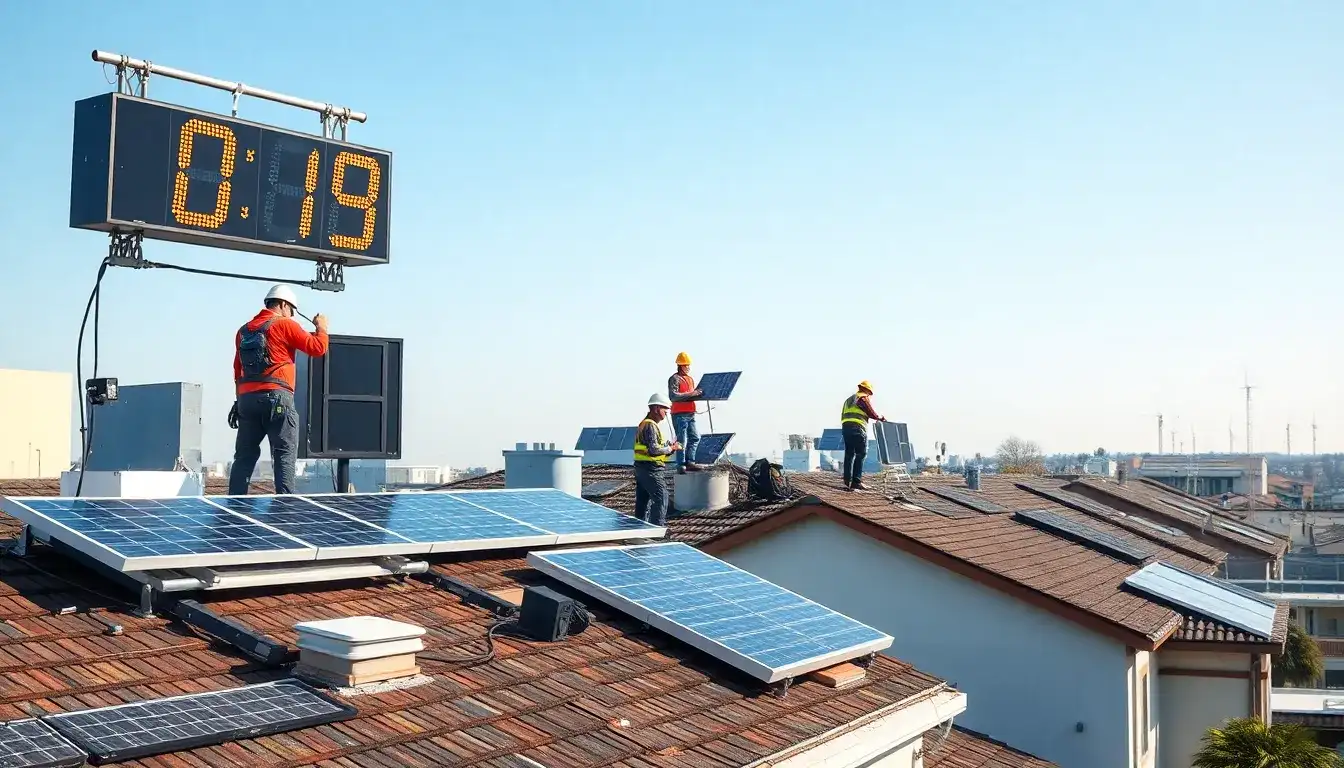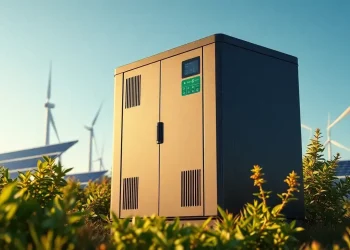
The Countdown to New Policy Sparks a Rush for Distributed Photovoltaics, with Component Prices Rising for Nearly a Month
Driven by new policy changes, the photovoltaic industry is experiencing a surge in demand, leading to rising prices for components. According to industry sources, the price hikes are not expected to be sustainable in the long term.
On March 11, a poster shared by an individual from a renewable energy company in the Yangtze River Delta on WeChat read, “Race to Connect to the Grid – Every Second Counts” and “Countdown to 531.” There are currently 79 days left until the new pricing for renewable energy fully comes into effect.
On February 9, the National Development and Reform Commission (NDRC) and the National Energy Administration jointly issued a notice titled “Notice on Deepening the Market Reform of Renewable Energy Grid Connection Prices to Promote High-Quality Development” (referred to as Document 136). This document states that renewable energy projects will generally sell their generated electricity into the market, with prices determined through market transactions. A sustainable price settlement mechanism will be implemented, distinguishing between existing and new projects starting from June 1, 2025, referred to as the “531” market entry node. After this date, the electricity generated by new projects will be priced through competitive bidding.
In January, the National Energy Administration also published the “Management Measures for the Development and Construction of Distributed Photovoltaic Power Generation”, which clarified various consumption models for distributed photovoltaics. According to this policy, projects initiated post-“430” must adopt self-consumption or partial grid connection models, prohibiting full grid sales. In simple terms, both policies will significantly impact distributed photovoltaics, introducing greater uncertainty regarding project profitability.
Industry insiders have reported that, in response to the new policy, some distributed photovoltaic companies have communicated to channels about reducing installation fees and adjusting household leasing prices. Some enterprises have even stopped accepting new orders to avoid delays in grid connection before the policy implementation deadline, while also limiting the signing dates for contracts.
“Currently, we are in a state of confusion, with various departments exploring their options and harboring concerns about the future. However, the most pressing issue now is to seize the time,” stated a representative from a distributed photovoltaic company.
In the short term, there are worries from both the industrial sector and capital markets about how the comprehensive market entry of renewable energy will affect electricity prices and, in turn, project returns and corporate profitability.
A representative from JinkoSolar (601778.SH) mentioned in an interview that, according to the timeline given by the NDRC, clearer details of the new policy will be released by the end of 2025. However, it is expected that some major provinces will provide their guidelines as early as the first half of the year, particularly those with mature conditions for renewable energy development and marketization.
These two critical timelines have directly fueled a rush for distributed projects in the first half of this year. The JinkoSolar representative indicated that there will likely be a noticeable surge in installations. For projects unable to meet the installation deadline, the company intends to cautiously assess investment standards like return rates until the local guidelines are released, but they have not ceased accepting new orders.
This rush has also directly led to increased component prices, reversing the previous trend of continuous price drops caused by oversupply in the industry. Components have seen price increases for nearly a month now, with multiple major manufacturers confirming these hikes. A leading component manufacturer noted that recent orders for distributed components are priced at 0.75 yuan/W or higher, with some orders reaching over 0.8 yuan/W.
Aiko Solar (600732.SH) reported that its BC component prices have also risen to 0.8 yuan/W and are expected to continue climbing under the current rush. Longi Green Energy (601012.SH) indicated that the average price of components is currently above 0.8 yuan/W. “Component prices have indeed risen, with current averages exceeding 0.7 yuan/W, and supply is relatively tight,” stated a representative from one component company.
Reports indicate that some component prices are approaching 0.9 yuan/W, varying by region, with areas ensuring higher electricity prices likely seeing slightly elevated component prices. At the end of last year, component prices had dropped to historic lows, with bulk procurement bids often falling to 0.6-0.7 yuan/W. The China Photovoltaic Industry Association had previously called for a component cost price of 0.68 yuan/W to discourage internal competition and promote healthy industry development.
On March 12, renewable energy analysis firm InfoLink Consulting reported that the average price for TOPCon bifacial double-glass components in China had reached 0.73 yuan/W, up 0.01 yuan from the previous week. The firm noted that the market has seen a spike in demand during this policy window, particularly in the distributed market, with manufacturers’ order rates significantly increasing in March and April.
Additionally, upstream companies in the supply chain have reported that strong demand in the distributed market is driving prices for silicon wafers and cells upward. The China Nonferrous Metals Industry Association’s silicon branch indicated on March 5 that expectations for the installation rush in March and April are likely to push downstream component and battery prices up, which may also translate to silicon material prices. A slight increase in average silicon material prices is predicted for this month.
However, the price hikes driven by policy changes are not expected to be sustainable over the long term. A representative from a leading component manufacturer suggested that after the surge in demand is released in the first half of the year, there may be price pressure in the third quarter. However, they remain optimistic about price trends for the fourth quarter and next year, given the ongoing supply-side reforms in the industry.
Another industry insider echoed this sentiment, stating that the price increases are driven by temporary demand spikes influenced by policy. Whether this growth trend continues will depend on market expansion in the second half of the year; otherwise, the price increases will not be sustainable.
Fundamentally, whether prices in the supply chain can continue to rise will depend on improvements in supply and demand dynamics. “The recent industry price recovery has been minimal, largely a simple adjustment in a state of imbalance and loss. Coupled with domestic policy changes, there may be impacts from the rush in the coming months,” stated Longi Green Energy President Li Zhenguo in a recent interview.
The honorary chairman of the China Photovoltaic Industry Association, Wang Bohua, previously noted that the introduction of electricity price reforms and the management measures for distributed photovoltaics has made revenue calculations for power stations more complex, thereby increasing the difficulty of investment decisions and the requirements for operational units, and raising uncertainties in investment expectations. Moreover, there is a time lag between the release of these policies and the implementation of specific measures at the local level, which could lead to a waiting period for investment units, potentially affecting installation rates.
Last year, China’s newly installed photovoltaic capacity exceeded expectations, reaching 277.57 GW, a year-on-year increase of 28.3%. During the same period, there were notable changes in the structure and regional distribution of new installations. Centralized installations again surpassed distributed ones, accounting for 57%; commercial and industrial sectors emerged as the main types of new distributed installations, while residential installations dropped to 11%.
This year, due to the management measures for distributed photovoltaic power generation, market reforms in renewable energy pricing, and the time lag in implementing these policies at the provincial level, there is a degree of cautious sentiment in the industry, increasing the uncertainty of installation expectations for 2025.
In the long run, these two policies are expected to foster healthy development in the photovoltaic industry. Longi’s President of Distributed Business in China, Niu Yanyan, pointed out that after the issuance of these two documents, the industry will need to undergo a period of exploration and adjustment before gradually returning to normalcy. “However, we are not pessimistic; these policies will create a more orderly market,” Niu stated, adding that the introduction of market-based electricity trading and grid connection restrictions will promote the development of energy storage and virtual power plants while requiring a more diversified approach from industry partners, significantly enhancing corporate capabilities.
Niu believes that these policies will also contribute to improving the overall grid’s consumption capacity, which will be beneficial for long-term industry growth. JinkoSolar echoed this sentiment, stating that the issuance of Document 136 further clarifies the comprehensive market entry of renewable energy and emphasizes establishing a sustainable price settlement mechanism, which greatly stabilizes market and long-term development expectations for green electricity operations.
They noted that the new policy has made adjustments and new requirements for the classification, grid connection models, and development of distributed photovoltaics, which clarifies market boundaries and will help the sector return to a stable growth trajectory. From an investment perspective, despite facing challenges from cost fluctuations, distributed photovoltaics retain a competitive edge due to their proximity to owners and absence of transmission and distribution costs, maintaining an advantage in project return rates. As self-investment costs gradually decrease, the demand for distributed photovoltaics is expected to grow among both residential and commercial users.
Recently, Trina Solar’s Chairman Gao Jifan publicly stated that market-based electricity trading represents a “coming of age” for the photovoltaic industry, serving as a historic opportunity to fully realize the marketization of energy storage value and catalyze significant growth in the storage sector. JinkoSolar has also stated that it is prepared for the upcoming phase of comprehensive market entry for renewable energy, encompassing resource management, asset management, and the integration of energy storage and electricity trading, alongside various emerging business layouts in power sales and virtual power plants.







